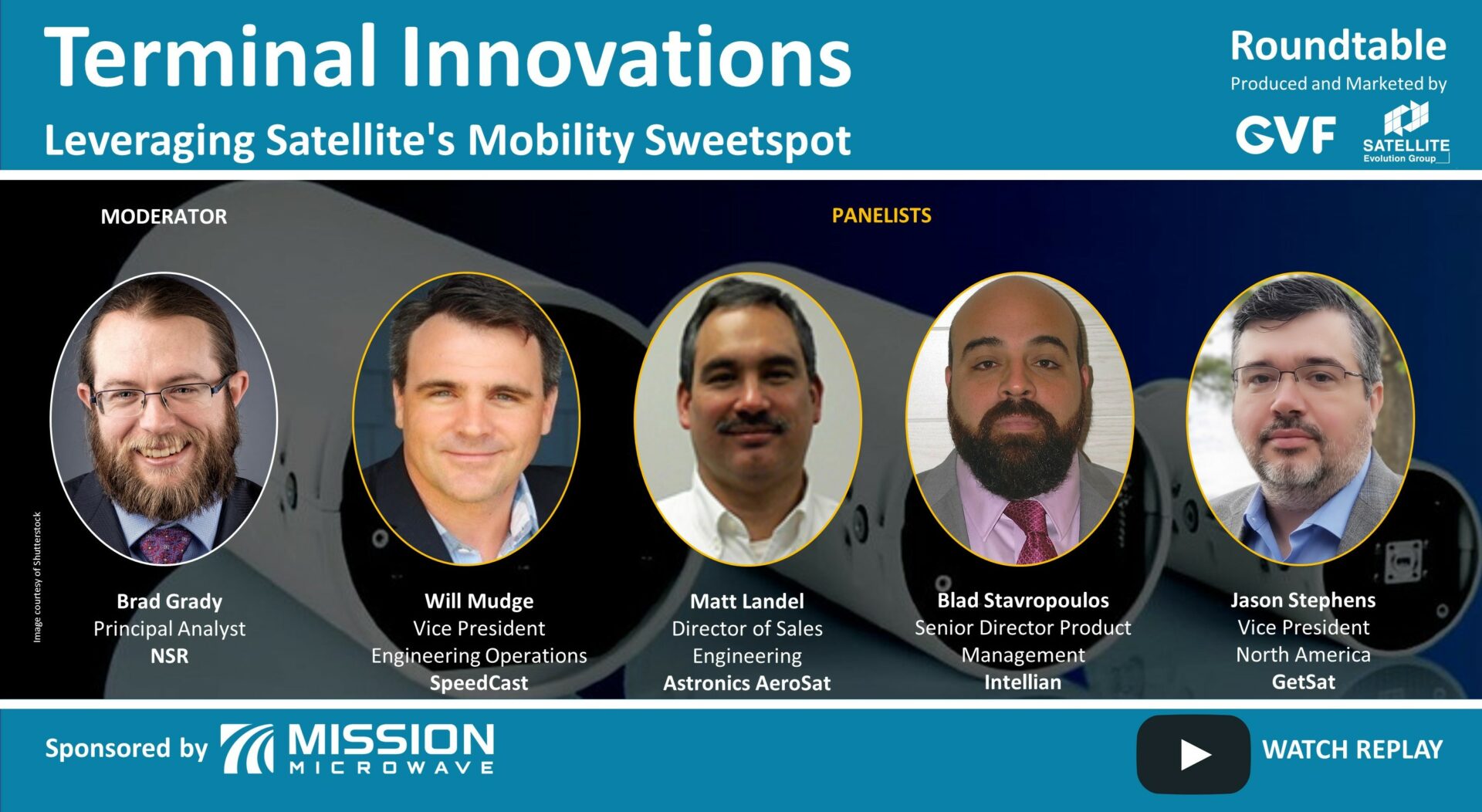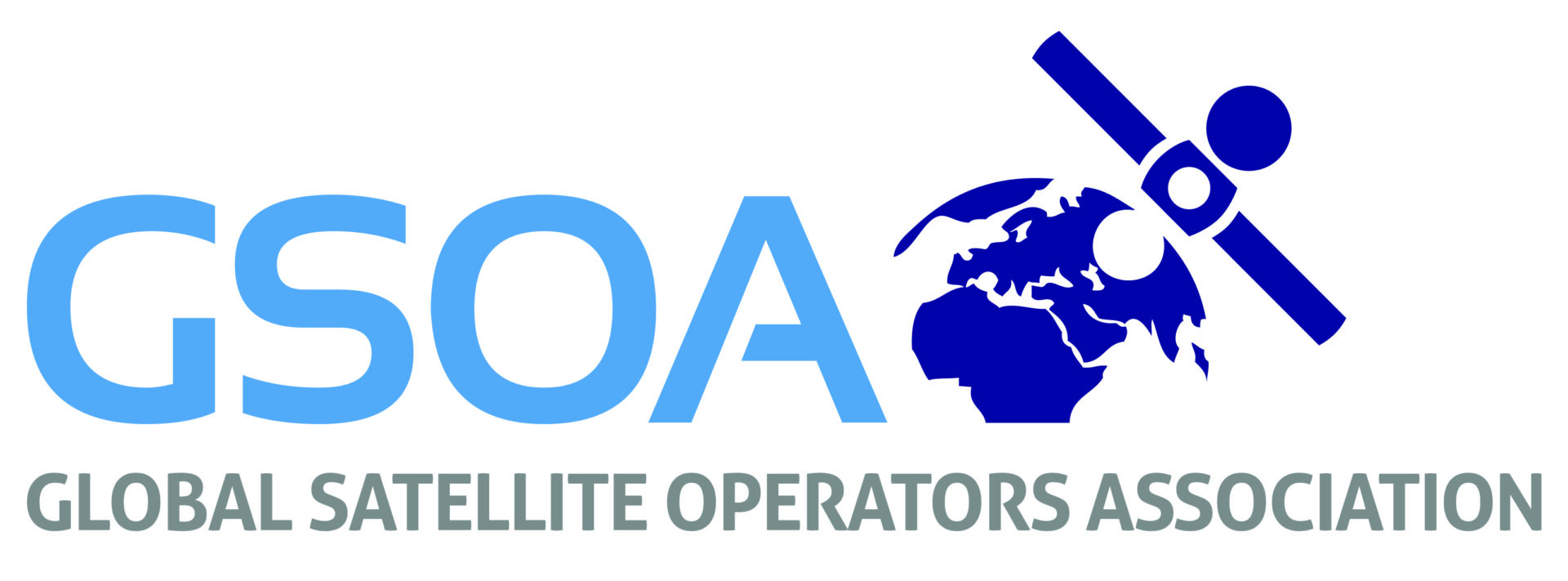Terminal Innovation: Leveraging Satellite’s Mobility Sweetspot

On-the-Move (OTM) and mobile applications are a market sweet spot for Satellite communications (SATCOM). While ships, planes, trains, and tactical platforms are sometimes able to connect to high-speed terrestrial services, SATCOM connections are critical to providing a reliable level of service and frequently a SATCOM connection is the only viable solution. While SATCOM is addressing OTM and mobile applications with rapidly increasing performance, customer expectations for connectivity have increased customer expectations as they are looking for interoperability among multiple orbits, bands, and service providers without degradation of performance or affordability.
Meeting customer expectations today, and evolving technology to meet tomorrow’s expectations, was a constant theme off conversation during this webinar which was comprised of a diverse group of experts familiar with the needs of customers in the maritime, aero, government, and other sectors that depend on SATCOM to meet their OTM and mobile applications.
At the outset, panellists noted that the last 12-18 months have seen customer demand for mobility increase along with an increase demand for flexibility. While this increased demand is partially driven by the COVID-19 pandemic and increased work-from-home, panelists commented that customers are increasingly requiring higher data transmission rates, smaller terminals, and increasingly flexible products. Panellists commented on recent technological developments which have helped meet these increased requirements . A topic of particularly interesting discussion was the process of understanding customer requirements and the critical need to engage with others within the value chain alongside the customer to educate around customer requirements, technical capabilities, and trade-offs. Panellists stressed the fact that the diversity of customer requirements often means that systems must be custom built. As customers increasingly require flexibility in terms of operating with multiple systems in multiple orbits and in multiple bands, panelists commented on what is possible now and what will likely be possible in the near future. Before concluding the hour-long webinar, panellists fielded some of the many questions from the audience such as the importance of specifications, the development of standard waveforms, and the disruptive forces shaping the industry.
Q & A continued….
The following questions were posed through the chat function during the panel. Thank you to our audience for taking an active part by asking questions, and to our panellists for their time to answer them after the webinar ended…
1. How are the regulators (ITU, FCC, etc) mitigating the frequency (Ku, Ka, etc) overlaps in multi-orbit interferences with small antenna with large beam widths… GEOs will inherently have ASI concerns as pLEO grow from Starlink, OW, LightSpeed and the new (other gov) pLEOS from China, Korea, etc… how does antenna manufacture ensure to meet the need of the constellation but not interfere with incumbent sats?
Will Mudge (Speedcast): Regulators have required that constellations and satellites not interfere with one another. It is required that each demonstrate they can achieve this goal. The reality is that LEOs have different frequency allocations and their look angles are usually different than a GEO, so there is not a huge area where they have to shut services off. Where there is, they just use another satellite till that look angle is freed up.
Matt Landel (Astronics Aerosat): The regulatory process for handling co-interference impacts is largely in the hands of the network designer and operator, with requirements flowed down to the antenna manufacturers. By meeting the defined requirements, whether they be beam width or sidelobe management, transmit enable/disable timing, frequency management, the antenna manufacturers will meet the requirements of the satellite network operator that are necessary to meet the needs of various regulatory agencies.
2. Blad are you guys going to introduce on-the go antenna like C-Comm?
Blad Stavropoulos (Intellian): We have plans for this in the future, but unfortunately we cannot share more details at this time.
3. It seems to me that “new space” industry is repeating the mistakes of the past by building proprietary terminals for each constellation instead of deciding on single user terminal and creating a business structure for roaming across satellites and operator constellations to maximize connectivity and performance. What’s it going take to move to a standard, reuseable terminal?
Will Mudge (Speedcast): Yes, we see this too. Many are moving away from the specific terminals to allow more broad use, but there are still some that are very specific. Some of it is because of how the state-of-the-art is being progressed and the advantages that affords. Until the technology level is universal, I suspect you will continue to see some variations as there remains room to innovate and differentiate through technology.
Blad Stavropoulos (Intellian): At Intellian, we have and will continue to build terminals that are Provider Agnostic, Multi-Band, Muli-Orbit and user friendly. Our terminals are currently able to join MEO and GEO and they are ready for LEO with just a software update.
Matt Landel (Astronics Aerosat): Astronics supports and builds multi-modem terminals that can support agnostic operation across different satellite networks and constellations. The technology to enable a single terminal to operate on multiple satellite networks has advanced faster than the business case for each operator to support interoperability. As long as there is a business case for a proprietary modem with a large enough customer set, the existence of proprietary modems and their related modems will continue. Note also that this issue goes far beyond just modem and signal commonality. The move from wide-beam, to HTS spot beams, to dynamic capacity allocation, and now to different LEO constellations opens additional dimensions to the operation of the network management system, where once again proprietary approaches exist, some of which are directly driven by the technologies employed on the satellites within the network constellation and may impact the operation of the remote terminal.
4. The cost of terminals will not create substantially more use of satellite. Customer only use satellite when they have to, not because its a choice. Satellite will always be the least best solution.
Matt Landel (Astronics Aerosat): As discussed among the panel, each customer has specific requirements that are unique to that customer’s mission and business model. There are many such cases where Satellite connectivity provides the best solution and other cases where satellite does not. Customers that require connectivity without local infrastructure across the globe, especially where mobility is concerned, have found and continue to find that satellite connectivity provides the best solution to their needs.
5. What is the likliehood that airframers will accept that any of the massive amount of heat from an ESA can be dissipated into the AC structure?
Matt Landel (Astronics Aerosat): The short answer is that they will not. The thermal energy dissipated by aby ESA will have to be dissipated in somewhere other than the aircraft structure. Astronics has built and validated an integrated chassis that fully addresses the worst-case ARINC-792 ESA thermal footprint for gate-to-gate operation around the world without adversely impact to the aircraft structure. This chassis can accept a variety of ESA panel technologies and solves many aircraft manufacturer and airline operations hot-points established through experiences with existing connectivity systems. Astronics is currently engaged with the ARINC 792 committee to develop thermal models that can be used by the aircraft manufacturers to identify and develop specifications and limits of acceptability for such systems.
